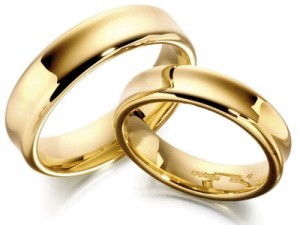 What does patriarchy look like in our society? To get an idea we need only examine the institution of marriage as commonly understood in Western – European society.
What does patriarchy look like in our society? To get an idea we need only examine the institution of marriage as commonly understood in Western – European society.
The institution of marriage, of course, has varied greatly over time. In ancient biblical times, polygamy anchored more than one woman and her children to one patriarchal male (Abraham, David and Solomon are a few well-known examples). Later on, marriage in many places was a transfer of property – the wife – from her father to her husband. In Christianity, marriage doesn’t officially become a sacrament until the 12th century. About this time, the idea of romantic love begins to emerge as well.
For a detailed, interesting and often funny history of marriage read I Don’t by Susan Squire.
Regardless, learning about the history of marriage allows us to appraise it more thoroughly. In our own culture, marriage in a society where women consistently earn less than men, are generally expected to be the primary parent and risk a divorce rate well over 40%, places women and children at high risk for poverty. It’s interesting to note that the majority of those in poverty are women and children.
Further, women are socialized to want this unbalanced economic and emotional relationship. In our culture it is often portrayed or considered ideal for women to stay and work at home (losing seniority, pay, network connections, advancement opportunities) in order to be with their children. When women do work, they frequently work part-time and often still bear most of the responsibility for childcare and household tasks.
This then, is what patriarchy looks like. A system of marriage and family that allows most of the lower paid work, long-term responsibility for child care and household care, and thus loss of wealth, to be shouldered primarily by women. However, most of the high paying work, assets and wealth are handed to men.
The fact that we can note exceptions proves the rule. What’s wrong with this system? Who benefits?
While certainly marriage was developed initially to serve the purposes you addressed in your entry (child care, maintenance of the home, family development), I think the last few decades have shown advancement in how a “marriage” is defined. It seems that in today’s world, the way a marriage works is more defined by the decisions made by the parties involved and not by society’s constructs.
Lauren, you are correct that marriage continues to evolve even now from what is considered its “conventional” form. This is how the construct of marriage continues to change similar to other social institutions. Its a good question whether relationships with power imbalances (economic, emotional, class or other) can allow the mutuality necessary for love in marriage. Many would argue that it can’t – that the imbalance of gender for example, for women, is too deeply embedded to be overcome. Others would say imbalances may be overcome in some cases. Regardless, we should work toward supporting women and children made vulnerable as a result of conventional marriage.
How can we work “toward supporting women and children made vulnerable as a result of conventional marriage?”
Jacqueline,
To start, your question is one that we must start asking MEN. This is how we help women and children. When society (i.e. men) pays women less for the same work (68% of men) and doesn’t allow women access to higher paying jobs AND requires them to shoulder most of the responsibility for children – women are being asked to do a nearly impossible task with their hands tied behind their back. This is inherently unfair and discriminatory. Further, resources that rightfully belong to women and children, are then going to men. We must ask MEN what THEY have done to care for children made vulnerable by a system of marriage designed for men by men, that benefits men at the expense of women and children. In addition, both men and women should have equal access to jobs and resources – and should share equally in responsibility for the health and well being of children.
(more) Other things we can do – as women – is not to buy into the cultural fiction that home or family is primarily the domain of women, or that “family” is everything. Ask questions -especially of men (see above). Get educated. Read. Genetic linkage is just that – genetic only. Where’s the arbitrary cut off line? If you go back far enough ALL are family. The idea of a “private” realm (mainly for women) and a “public” realm (for men) is pure fiction and promoted to the benefit of men who make decisions affecting everyone in the public realm and keep women powerless/poor in the private. All is political and women should have an equal voice in either. This means participating in political discussions. Other fictions include nationalism, “family first/only,” tribalism, clanism, etc. Ask, who is really “my family”? We all are. When all are considered family – vulnerable women and children will be cared for.
[…] may also like Conventional Marriage Makes Women and Children Vulnerable and Our Deepest […]
[…] a previous post I wrote about how conventional marriage makes women and children vulnerable to poverty. The fact is […]